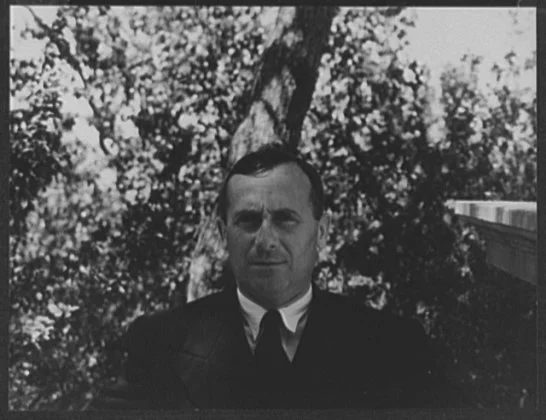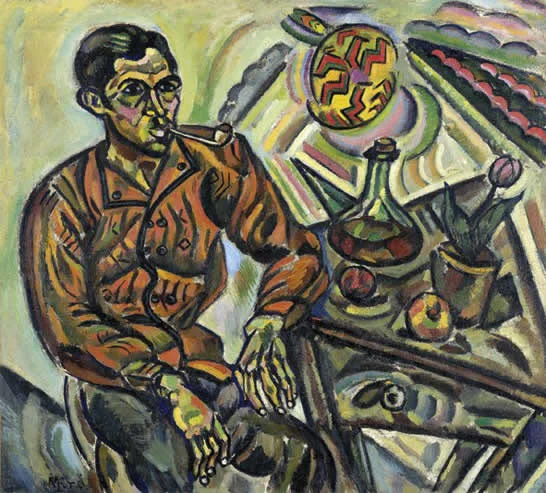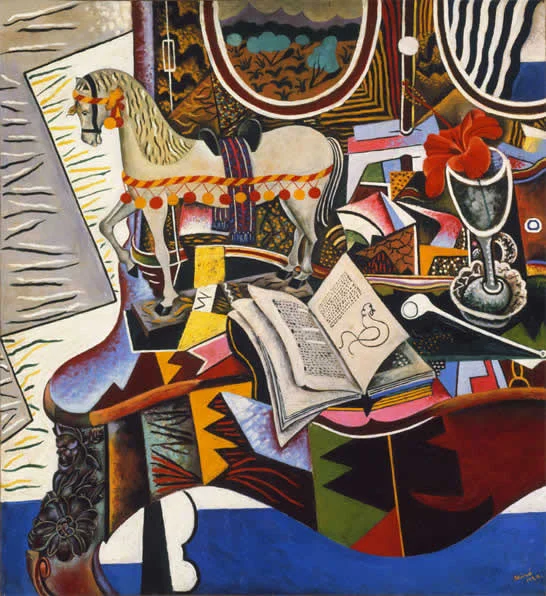Joan Miró (April 20,1893 December 25,1983)
Joan Miró i Ferrà was born in Barcelona, Spain on April 20, 1893. He began private drawing classes at the tender age of severs old. When he was seventeen, he enrolled at the fine art academy La Llotja despite his father’s disapproval. Miro originally studied business, but abandoned that world after suffering a nervous breakdown. His first solo show was in 1918 at the Galeries Dalmau where his work was defaced and ridiculed. Miro still cultivated his interest in art and inspired by Fauvist and Cubist exhibitions in Barcelona and abroad. The influence of the avant-garde is reflected in his early works. This period in Miro’s art is referred to as his Catalan Fauvist period.
In 1920 he moved and settled in Paris and completed many paintings that he had bungun at his parent’s home in Mont roig del Camp which he would continue to visit annually. These pilgrimages encouraged a symbolism and nationalism within Miro’s work that would remain throughout his career. During this period, Miro’s work included symbolic language and elements of Surrealism and in 1924, he joined the Surrealism group. The dualities and contradictions within Miro’s work fit well within the group and during this time his work became less cluttered and more streamlined. He began experimenting with collage and rejecting the traditional confines of framing. The paintings that emerged from Miro’s during this period is referred to as his “dream paintings.”

Portrait of Joan Miro 1935
In 1920 he moved and settled in Paris and completed many paintings that he had bungun at his parent’s home in Mont roig del Camp which he would continue to visit annually. These pilgrimages encouraged a symbolism and nationalism within Miro’s work that would remain throughout his career. During this period, Miro’s work included symbolic language and elements of Surrealism and in 1924, he joined the Surrealism group. The dualities and contradictions within Miro’s work fit well within the group and during this time his work became less cluttered and more streamlined. He began experimenting with collage and rejecting the traditional confines of framing. The paintings that emerged from Miro’s during this period is referred to as his “dream paintings.”

Joan Miro Portrait of Vincent Nubiola (1917)
In 1920 he moved and settled in Paris and completed many paintings that he had bungun at his parent’s home in Mont roig del Camp which he would continue to visit annually. These pilgrimages encouraged a symbolism and nationalism within Miro’s work that would remain throughout his career. During this period, Miro’s work included symbolic language and elements of Surrealism and in 1924, he joined the Surrealism group. The dualities and contradictions within Miro’s work fit well within the group and during this time his work became less cluttered and more streamlined. He began experimenting with collage and rejecting the traditional confines of framing. The paintings that emerged from Miro’s during this period is referred to as his “dream paintings.”

Joan Miro Horse, Pipe, and Red Flower (1920)
Miro’s paintings rarely fully embraced non-objectivity; it consistently maintained a symbolic, schematic language. In 1926, Miro collaborated with Max Ernst on designs for ballet impresario Sergei Diaghilev and assisted Ernst in the pioneering of the technique called grattage in which the artists towels pigment onto a canvas and then scraping it away.
In 1929, Miro married Pilar Juncosa and the couple had their daughter Maria Dolores Miro in 1930. In 1931 Pierre Matisse opened an art gallery in New York that consistently represented Miro’s work and introduced his art to the American market.
Miro had been returning to Spain in summer consistently until the outbreak of the Spanish Civil War. It was not until Spain’s Republican government commissioned him to paint the mural now known as The Reaper for the Spanish Republican Pavilion at the 1937 Paris Exhibition, that Miro incorporated political explicitly political commentary. In 1940, Miro narrowly escapes to Spain from Paris ahead of the German invasion of France. In Varengeville, Palma, and Mont-roig, between 1940 and 1941, Miró created the twenty-three gouache series Constellations. Revolving around celestial symbolism. Features of this work revealed a shifting focus to the subjects of women, birds, and the moon, which would dominate his iconography for much of the rest of his career.
A monograph was published on Miro in 1940 by Schuzo Takiguchi. Miro was living in Barcelona but continued visiting Paris frequently. In the following years, Miro created a series of sculptures and a tapestry for the World Trade Center in New York that was regrettably, lost during the September 11th attacks.
Miro received a doctoarate honoris causa from the University of Barcelona in 1979. Joan Miro died due to complications with heart failure at his home in Palma (Majorca) on December 25, 1983.